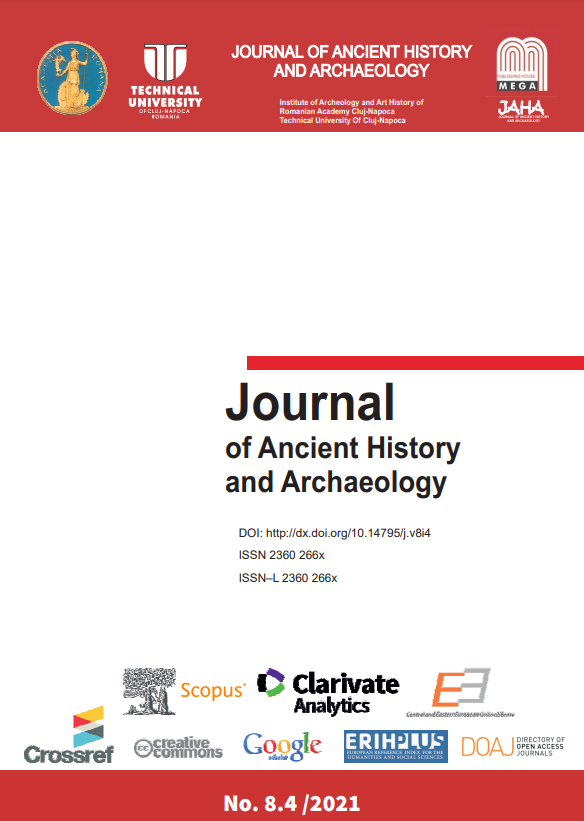A STREET WITH A VIEW OVER THE CENTURIES. THE CERAMIC MATERIAL FROM THE STREET A IN FRONT OF THE CRYPT BASILICA AT HISTRIA (I)
A STREET WITH A VIEW OVER THE CENTURIES. THE CERAMIC MATERIAL FROM THE STREET A IN FRONT OF THE CRYPT BASILICA AT HISTRIA (I)
Author(s): Alina Streinu, Irina AchimSubject(s): History, Archaeology, Economic history, Ancient World
Published by: Editura Mega Print SRL
Keywords: Late Antique street; Histria; Early and Late Roman pottery; local and regional economy;
Summary/Abstract: This paper discusses the ceramic assemblage discovered during the 2007 and 2018 campaigns in the on the route of street A, north of the Crypt Basilica, one of the few urban arteries revealed from the road network of late Roman Histria. The analyzed ceramic inventory, which is in a very advanced state of fragmentation, covers the period of the 1st – 6th centuries AD and includes almost all ceramic categories: transport, storage, table ware and cooking vessels. The statistical analysis shows the dominance of table wares, followed by transport vessels and cooking wares. In the case of the latter, this category includes both wheel or the handmade fragments. Each category is analyzed based on morphological and functional criteria, and the discussion extends to the issue of production centers. Considering the rich ceramic variety, especially the transport vessels and fine pottery, shows the commercial connections of Histria with large manufacturing centers, especially in the Aegean, Pontic and Micro-Asian, both during the early Roman period and in the Late Antiquity. During the 2nd and 3rd centuries the transport vessels arrived carrying wine and oil mainly from south Pontic and Aegean centers, while and the finer pottery has a Pontic and local origin, with few imports. By contrast, during Late Antiquity, Aegean amphorae dominate as the main imports in this category, represented especially by the well known types LRA 1 and LRA 2, in close connection with the annona militaris. There are still Pontic containers, such as the Kuzmanov XVI type of amphorae and a single Levantineamphora. Starting from the chronological and typological distribution of the ceramic material, the paper aims to answer questions related to the economic relations of History in the Roman era, the issues regarding a local and regional production and the changes that can be observed in the transition from the Principality to the Late Antiquity.
Journal: Journal of Ancient History and Archaeology
- Issue Year: 8/2021
- Issue No: 4
- Page Range: 127-155
- Page Count: 29
- Language: English

